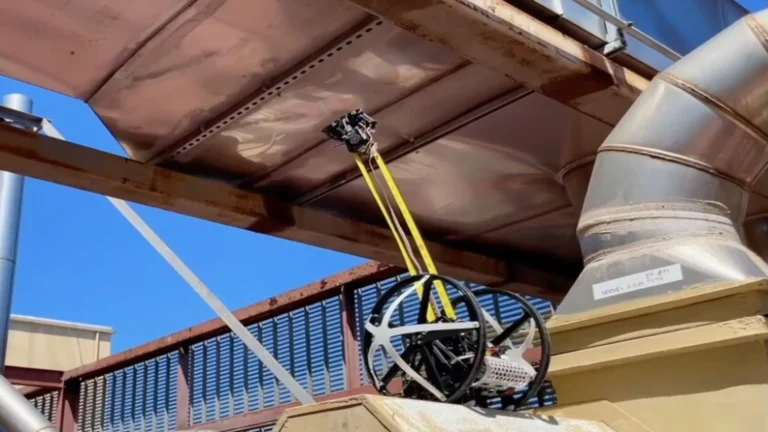The recently developed EEWOC climbing robot has demonstrated a unique ability to climb metal structures by taking advantage of a unique technology: an extendable measuring tape. This mechanism could be essential in the future for inspection and repair tasks on critical infrastructure such as towers, bridges and ships.
Unlike other climbing robots that rely on vacuum systems or legs with magnets, the EEWOC stands out for its simplicity and efficiency. Previous systems face challenges in overcoming small obstacles or are complex and slow. In this context, EEWOC emerges as a potentially superior solution to vertical movement.
About EEWOC Climbing Robot
The EEWOC robot has a diameter of 260 mm and a weight of 2.1 kg, standing out for its speed with a climbing speed of 0.24 meters per second , making it one of the fastest climbing robots available.





It is important to note that EEWOC is a project of the UCLA Robotics and Mechanisms Laboratory, developed by Justin Quan, Mingzhang Zhu and Dennis Hong. It works as a self-balancing device that rolls on wheels on flat surfaces, but when it needs to climb, it deploys an innovative limb called EEMMMa.
The EEMMMa uses a metal measuring tape that extends from the inside of the robot forming an “inverted U”, anchoring itself back to the robot and passing through a pulley on a specialized tool at the top of the U. This tool has an adjustable electromagnet that facilitates adherence to metal surfaces during climbing.
The climbing process begins by extending the tape up to 1.2 meters, holding the end effector tool in position while the robot approaches the anchor point picking up the tape. To maneuver around ledges, the end effector modifies its behavior to allow the tape to bend, creating the necessary angle for the magnet to adhere and the robot to overcome the obstacle.

The robot deploys an extendable measuring tape for climbing. Source: RoMeLa.
EEWOC in the future
Future developments could include multiple EEMMMa limbs that allow movements in various directions and tools adapted to grasp other non-metallic surfaces.
In the field of robotics , adaptability and versatility are crucial for applications in complex and changing environments. The EEWOC design illustrates a significant step forward in this direction, offering speed and the ability to maneuver in challenging environments. These characteristics could make the EEWOC an ideal candidate for disaster rescue tasks or for maintenance work in difficult-to-access infrastructures, marking a milestone in service robotics.
Follow us on social networks and don’t miss any of our publications!
Inspenet.com YouTube LinkedIn Facebook Instagram X
Source and photo: newatlas.com













